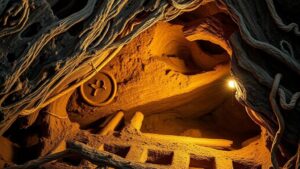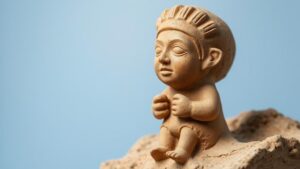Recovering Tools and Relics in Desert Oasis Habitation Areas
Recovering Tools and Relics in Desert Oasis Habitation Areas
Desert oases have been critical throughout human history, serving as vital sources of water and sustenance in otherwise arid environments. As archaeological sites, these areas are rich in tools and relics that can provide insights into past civilizations. The recovery of these artifacts requires a thorough understanding of the unique landscape and cultural context of the oasis. This article discusses best practices and methodologies for recovering tools and relics in desert oasis habitation areas and highlights significant case studies that illustrate successful recovery efforts.
The Importance of Desert Oasis Areas
Desert oases act as natural lifelines in harsh environments, historically allowing settlements to flourish. This makes them significant archaeological sites for studying human adaptation and survival strategies. Oases typically contain various resources, including:
- Water sources for irrigation and drinking
- Fertile land for agriculture
- Natural shelter from extreme temperatures
Given their strategic importance, these areas often contain remnants of ancient tools and relics which are crucial for understanding the cultures that thrived there.
Methodologies for Recovery
The recovery of artifacts from desert oases involves several methodologies. Archaeologists typically use a combination of non-invasive and invasive techniques, each yielding unique insights into the historical context.
- Surveying: Surface surveys are essential for identifying potential areas of interest. Techniques such as pedestrian surveying allow archaeologists to observe and record surface artifacts without disturbing them.
- Geophysical Methods: Technologies like ground-penetrating radar (GPR) enable researchers to identify subsurface features without excavation, minimizing disturbance to the site.
- Excavation: When artifacts need to be unearthed, controlled excavations follow strict protocols to ensure proper documentation and preservation techniques.
Challenges in Recovery
Recovering artifacts in desert oasis areas presents several challenges. These include:
- Environmental Conditions: Extreme temperatures and shifting sand can hinder excavation efforts and damage delicate artifacts.
- Site Preservation: Many oases are threatened by modern developments such as agriculture and urbanization, which can damage or destroy archaeological sites.
- Cultural Sensitivity: Researchers must navigate the complexities of indigenous rights and local customs when conducting excavations.
Addressing these challenges is crucial for successful recovery efforts, ensuring respect for both the archaeological record and local communities.
Case Studies
Numerous case studies illustrate effective recovery techniques and their contributions to understanding oasis habitation. One prominent example is the excavation at the ancient oasis town of Qasr al-Hallabat in Jordan. Archaeologists employed a combination of GPR and excavation techniques to uncover a series of burial sites and domestic structures, revealing insights into trade networks and daily life in the region.
Another case study involves the El-Faiyum Oasis in Egypt, where researchers uncovered tools dating back to the Early Dynastic period. The multidisciplinary approach included paleoethnobotanical analysis, which highlighted the agricultural practices and resource management techniques utilized by ancient inhabitants.
Real-World Applications
The methodologies and findings from recovering tools and relics in desert oasis areas have wide-ranging applications. can inform contemporary water resource management policies, enhance cultural heritage tourism, and cultivate awareness of the ecological challenges faced by arid regions today. By embracing interdisciplinary approaches, researchers can not only recover artifacts but also contribute to sustainable practices in managing these fragile ecosystems.
Conclusion
Recovering tools and relics in desert oasis habitation areas is a multifaceted endeavor that necessitates careful planning, innovative methodologies, and cultural sensitivity. As demonstrated through historical case studies, these recovery efforts can yield significant insights into ancient societies and their adaptations. It is crucial for researchers to continue developing strategies that balance archaeological integrity with sustainable practices to ensure these vital historical records are preserved for future generations.


